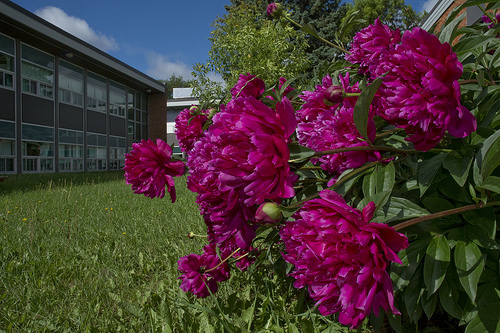About Manitoba
July 16, 2024
Manitoba is a prairie province situated in the center of Canada. It was founded in 1870 and is named after the phrase "where the spirit lives," which means Manitoba in the languages of the Indigenous people who initially inhabited the region. Manitoba is often called 'Friendly Manitoba' as its urban and rural communities are known for their diversity and welcoming nature.
Population: 1.4 million Area: 649, 947 square kilometres in the center of Canada Capital City: Winnipeg Form of Government: Parliamentary Democracy Climate: The region experiences four distinct seasons, including a cold and dry winter, a hot and dry summer, moderate and cool spring and fall. Terrain: Prairie grasslands stretch south and west, while Canadian Shield lakes and forests dominate the east and north. The far north is characterized by arctic tundra. Natural Resources: Abundant freshwater lakes and rivers, hydroelectricity, base metals such as nickel, copper, and zinc, fishing, forestry, gold, oil, and agriculture. Major Exports: Farm products, metals and minerals, processed foods, vehicles and transportation equipment, machinery, electricity, medicines, chemicals, plastics, and paper Major Agricultural Commodities: Canola, wheat, hogs, cattle, dairy products, oats, poultry, barley, flaxseed, eggs Provincial animal: Bison. Manitoba's open plains once had hundreds of thousands of wild bison. Aurora borealis (Northern Lights): The town of Churchill, located on the edge of Hudson Bay, is the best place in the world to see the northern lights and is also known as the world's polar bear capital. Winnie-the-Pooh: Winnie-the-Pooh, a character from A.A. Milne's stories, was inspired by a bear cub adopted by a soldier from Winnipeg. The soldier named the bear "Winnipeg" and later donated the bear to the London Zoo in 1916. |
Winter is a great time for outdoor activities such as skiing, snowboarding, ice skating, sledding, snowshoeing, and horse-drawn sleigh rides. In February, Winnipeg hosts the famous "Festival du Voyageur," celebrating the city's French Canadian heritage. The festival features traditional dogsled races, snow sculptures, maple sugar candy, delicious, authentic French Canadian cuisine, and live entertainment. |  | |
Spring is when the environment transforms into a stunning sight with fresh green grass, new leaves sprouting on the trees and colourful flowers in full bloom. As the daylight hours increase, more and more people in Manitoba look forward to spending time outdoors and participating in sports and recreational activities. |  | |
| Summer is a great time for outdoor enthusiasts in Manitoba, offering numerous sandy beaches and over 100,000 lakes for boating, fishing, and water skiing. Hiking, cycling, and mountain biking are also popular activities. |  | |
Fall is a season of natural beauty, marked by the transformation of trees into brilliant shades of red, yellow, and gold. As the weather cools and days shorten, the Manitoba countryside becomes a vibrant agricultural rainbow, with crops such as yellow sunflowers, red wheat, purple flax, and green cornfields ready for harvest. The fall season also brings the start of hockey and football playoffs and the end of baseball season. It's also the beginning of many school sports teams. |  |
Visit Travel Manitoba for more information.


